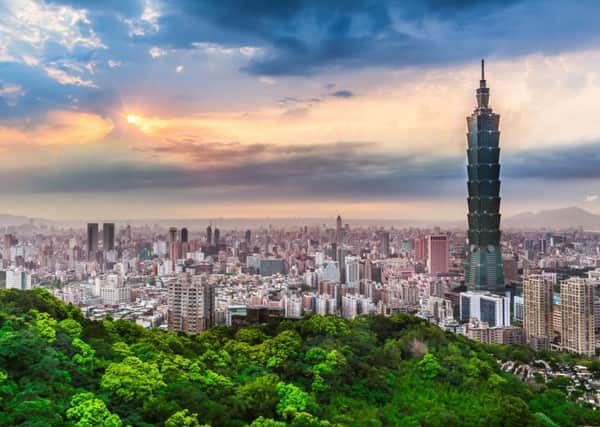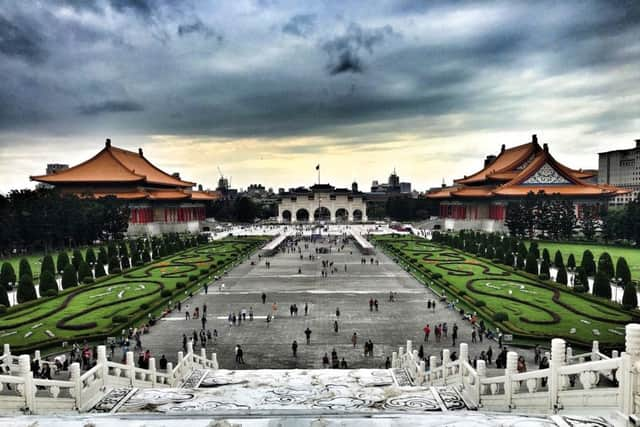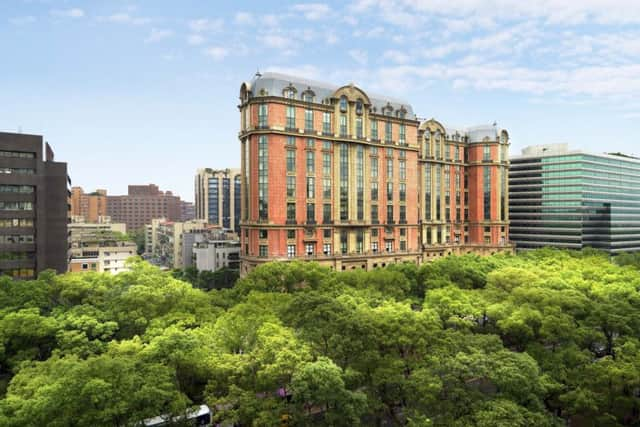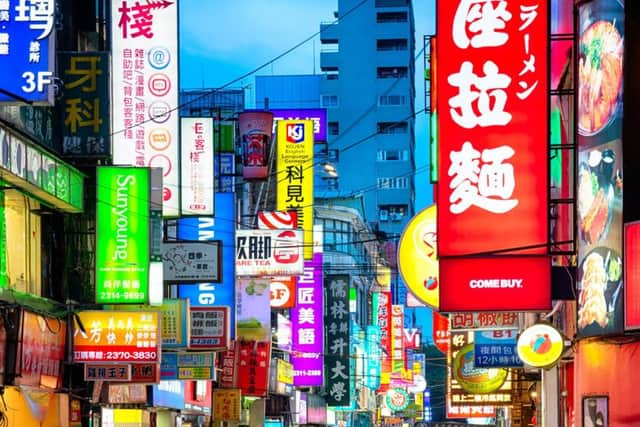Travel: Taipei, capital of Taiwan


With my grandmother hailing from Malaysia and a great-grandmother born in China, I’ve always had an interest in Asia, but Taiwan has never really crossed my radar. So when the chance arises to visit, I jump at the opportunity to head back east.
As the lights of Taoyuan Airport grow bigger in the darkness, I have no idea what to expect of the capital, Taipei. Arriving at our hotel around 11pm, I have to ignore my gut instinct to get out and explore until I’ve awoken, refreshed after a night’s sleep.
Advertisement
Hide AdAdvertisement
Hide AdLuxury is not in short supply at the Mandarin Oriental Taipei. Champagne breakfast? Spa treatment? Certainly, and there’s still ample time to get ready for a dim sum lunch at Ya Ge, the hotel’s traditional Chinese restaurant. Crab meat, shrimp shu-mai, glutinous rice and charcoal salted egg custard bun are all on the menu, with oolong tea to wash it down. I could get used to this.


After lunch we pile into a minibus for a tour of the city. Traditional buildings rub shoulders with futuristic skyscrapers. The wide streets remind me of New York City’s avenues, but the Dadaocheng district, where Baroque-style buildings jostle for space, hints at historic Taipei. After a brief spin around the city we’re whisked off to the headquarters of EVA Air, where we gain an insight into cabin crew training and test out our own prowess as pilots in a 747 simulator (about which the less said the better). There’s even an aeroplane mock-up above an Olympic-sized swimming pool so trainees can practise emergency landings on water.
It’s not all messing about with model planes, however. Our last stop for the day is Villa 32, a boutique hotel with a hot spring; a hub for relaxation and well-being nestled in the mountains in the Beitou District. Hot springs with their healing waters have been popular in Taiwan for over a century, and at Villa 32 each of the five rooms comes with its own private hot springs tub.
We’re due to have dinner in Bencotto, one of the Mandarin Oriental’s many on-site restaurants. General manager Michael Ziemer joins us, giving us a chance to quiz him about the hotel, Taipei and more over Boston lobster, sea urchin risotto, wagyu beef and truffles.
Next morning we set out for one of Taipei’s many markets in the Zhongshan District. It’s a little overcast but this doesn’t prevent the locals from stocking up for the day at the numerous stalls. Seafood, fruit, vegetables and meat are all here in abundance. We’re also introduced to Addiction Aquatic Development (AAD), a vast seafood market near to the former site of the Taipei Fish Market.


As we go through a doorway into the Live Aquamarine area, the biggest crab I’ve ever seen waves a hairy claw in our direction, and I peer into one tank to be met with the sight of mussels the size of a leg of pork. It’s astonishing, and the entire 2,000 square metre complex is a sight to behold. As well as the live seafood market and gourmet grocery store, there’s a charcoal grill and a Hot Pot restaurant, making it a great pity that we can’t linger for lunch.
Our next stop is the National Palace Museum, which houses a permanent collection of close to 700,000 Chinese imperial artefacts and encompasses more than 10,000 years of Chinese history, from the Neolithic Age up to the Qing Dynasty, which ruled from 1644 to 1912.
There are artefacts from the Tang Dynasty, 1,100 years ago, and vases and bowls from the Ming Dynasty. We even manage to catch a glimpse of the famous Meat-Shaped Stone, which is exactly what it sounds like – a carved piece of jasper, that resembles a piece of stewed pork.
Advertisement
Hide AdAdvertisement
Hide AdNext on the itinerary is a trip to the top of the Taipei 101 tower, formerly the tallest building in the world, and from the ground looking up, the top of the tower is hidden by a thick blanket of cloud. Before heading to the observation deck in one of the super-fast lifts, we stop off for lunch at Din Tai Fung, famous for its xiaolongbao, or steamed dumplings. Huge queues and lengthy waits are the norm here, but it is very much worth it. At the top of the tower, despite the cloud, the view is breathtaking and the mountains just visible in the near distance.


From Taipei 101, we head to Chiang Kai-shek Memorial Hall. Built in 1975 to honour the former Taiwan president, it sits in a vast area of space that houses a huge garden and the National Theatre and National Concert Hall. Our time here is limited, but we do get to climb the 89 steps – one for every year of Chiang’s life – to the hall itself, and marvel at his statue.
From there it’s on to the Lungshan Temple, founded in 1738, and dedicated to the Buddhist Goddess of Mercy. It’s packed with people praying and burning incense, and we join them briefly, before moving on to Dihua Street in the Datong District. Built in the 1850s in a baroque style, it is where many people go to stock up on medicinal herbs, fabrics, incense materials and Taiwanese tea.
Our farewell dinner is at Shi-Yang Tea House in the mountains, and with the rain bucketing down, frogs hop about at my feet in the darkness as we arrive. Removing our shoes, we are led to a private dining room where we are served up what the restaurant has chosen, there being no menu. Shi-Yang puts a lot of focus on traditional Taiwanese dishes and owner Lin Pin-Hui makes sure dishes are steamed or stewed, not fried.
After the modern hustle and bustle of Taipei’s centre, to end our time in Taiwan with what feels like a step back in time is a wonderful contrast. I’m reluctant to leave, but we’ve packed a lot into a fascinating few days, and while it might not be the go-to destination in east Asia, Taipei has plenty to inspire the curiosity of every kind of traveller.